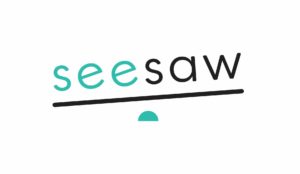By Miranda Johnson for Seesaw Magazine
See the original article here
Two exhibitions, ‘All Mixed Up’ and 'Janangoo’, remind Miranda Johnson that Indigenous art has much to say about contemporary Australia.
Review: Mangkaja Arts, John Prince Siddon, ‘All Mixed Up’, with Butcher Cherel Janangoo, ‘Janangoo’
Fremantle Arts Centre
Review by Miranda Johnson
John Prince Siddon’s major solo exhibition, “All Mixed Up” features paintings on canvas, bullock skulls and carved animal hides displaying an extraordinary array of colourful and surreal images of Australiana, historical and contemporary, mythical and mundane.
Siddon is a Walmajarri man from Fitzroy Crossing in the Kimberley region of Western Australia. His painting career began after he lost a leg in an accident while working on a cattle station. But his relationship with Mangkaja, the art centre that facilitates his work, began much earlier – his father, Pompey Siddon, was one of its founders. Mangkaja plays a significant role in the region, supporting more than 100 artists from four different language groups.
Siddon’s work is significantly different from that of the other artists working with Mangkaja Arts. It is incredibly distinctive in style, with recognisable imagery floating impossibly alongside text and colourful depictions of landscape, the ocean, and flames.
Exhibition curator Emilia Galatis says understanding the meaning of Siddon’s work is like pulling out tarot cards and trying to decipher them – seeing images and patterns that are significant but opaque, mutable yet archetypal. She also firmly describes his work as contemporary art. While his practice is in a remote Australian community, Siddon is responding to the same political, environmental and global rhetoric and concerns that affect all Australians. And he does so with a sense of urgency and wry humour.
Siddon’s work refers to colonial Australian history as well as dealing with more recent issues involving “Scotty from Marketing” (a nickname for Prime Minister Scott Morrison, poking fun at his previous career), and the lingering spectre of boat people – those arriving to escape violence elsewhere, and those who arrived a couple of hundred years ago.
In her curator’s essay, Galatis also notes the ways Indigenous art has always run parallel to history, presenting alternative truths. In Siddon’s case, these are sometimes dressed up as surreal fiction but with a fundamental nod to the underlying history and experience. In this way, “All Mixed Up” is an apt title indeed, because rather than running parallel to mainstream colonial history, Prince’s work drives contradicting and uncomfortable narratives against one another, displaying their absurdities, tragedy and incongruities.
[gallery link="none" columns="1" size="full" ids="https://media.localista.com.au/2020/02/John-Prince-Siddon-Bullock-Skull-2019-acrylic-on-bullock-skull-76-x-70-x-30cm.-Courtesy-of-Mangkaja-Arts.-Photography-by-Pixel-Poetry-1-768x512-1.jpg|"]
John Prince Siddon, ‘Bullock Skull’, 2019.
The works are sometimes dark and tragic: one shows native and introduced animals stacked on top of one another, flames surrounding their bodies. Though it was painted before this summer’s destructive bushfires, it now resonates with new meaning – a prediction. In a slightly older work, Siddon presents an entreaty to stop one-punch violence, a destructive problem in remote communities.
Our country’s current climate of political disappointment and environmental tragedy informs all his imagery. Siddon’s work lays this out with a sense of urgency as well as a profound sense of his own place within the multiple narratives of Australia.
This sense of place is elegantly carried through in “Janangoo” – which runs alongside “All Mixed Up” – an exhibition of works on paper from the Mangkaja Arts archives by Gooniyandi Elder Butcher Cherel Janangoo (1920-2019).
Curator Lynley Nargoordah’s selection of his works from the early 2000s was made in close consultation with his family. Janangoo’s colourful abstracts represent his country as well as traditional stories he hoped to preserve for future generations. Looking at them, we are reminded once again that Indigenous art cannot always be seen as separate from contemporary art.
Seen together, the two exhibitions provide a detailed and thoughtful representation of country and environment, mythology and history, truth and fiction, all of which are so deeply intertwined, overlapping and contradictory in contemporary Australia.

More Perth Festival events
[lp-scoop-widget] data-prop-region=western-australia data-prop-type=events data-prop-fixed-categories=132847 [/lp-scoop-widget]